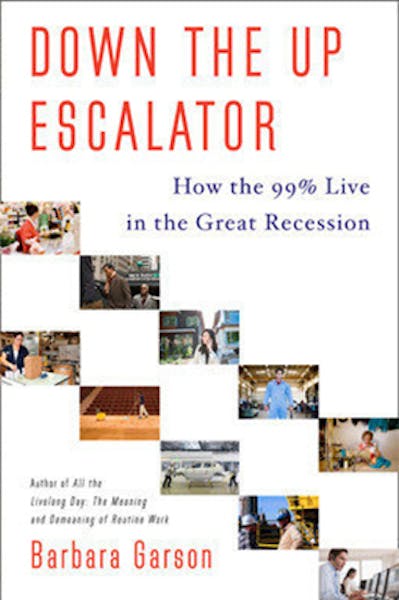Like increasing numbers of grocery shoppers, Ty Rushmeyer doesn't have a regular store.
The 28-year-old and his wife go to Rainbow once a week, but they also stock up their pantry at Target. Then there are "fun runs" for unique products at Trader Joe's, Whole Foods, an Asian market, the Wedge Co-op and, in season, the farmers market.
"We're looking for healthier options," Rushmeyer said. "But we're also deal seekers. We know which store has the best price for each item."
Welcome to the new grocery landscape, in which traditional grocers like Cub Foods and Rainbow are less able to count on loyal customers who buy everything they need in one visit. Instead, shoppers are spreading their money around and constantly looking for deals.
It's a dynamic that complicates a competitive landscape for Cub Foods, the grocery market leader in the Twin Cities. Supervalu, Cub's parent company, is leaning on the Cub brand to help revive its fortunes after it recently sold several major chains but kept Cub. Just last week, Eden Prairie-based Supervalu said it was cutting 1,100 corporate jobs to get its head count more in line with the company's reduced size.
But Cub and primary rival Rainbow are getting squeezed, not only by Target and Wal-Mart, but also by co-ops, farmers markets, specialty gourmet stores, Aldi, dollar and drugstores. Rainbow recently closed its Forest Lake store and soon will shutter locations in Robbinsdale and Plymouth.
"Consumers are constantly comparing from retailer to retailer," said John Rand, a supermarket analyst for Kantar Retail in Cambridge, Mass. "If a store starts to slip because its prices are out of line or quality is suffering, people will quickly move on."
Cub Foods held 21 percent of the Twin Cities grocery market in 2012, according to data from Metro Market Studies, but that share has shrunk from 24 percent in 2006. In 2012, Metro Market estimated that Target and Rainbow each had 12 percent of the market.
Traditional grocery stores nationwide have lost 15 percent of their market share in the past 10 years, said Phil Lempert, a food industry consultant at Supermarketguru.com.
Although shopping habits have been shifting for a decade, the recession accelerated the change. Everyone is a value customer now, analysts say, and traditional grocery stores are finding it difficult to compete on price.
"It's gone from a polite competition between Cub and Rainbow to a bar brawl," said consumer behavior analyst Paco Underhill.
Not only will Wal-Mart and Target match lower prices in competitors' ads, but their prices are already 9 to 14 percent less than Cub's, according to a 2011 price survey by Checkbook, a Washington, D.C., nonprofit that publishes Twin Cities Consumers' Checkbook.
Not long ago, Cub was using "low price leader" as a slogan. More recent ads describe Cub as a shopper's neighborhood store. Supervalu spokesman Mike Siemienas acknowledged the industry is changing but said the company is working to give shoppers reasons to go to its stores.
"The grocery industry is becoming more competitive every day," Siemienas said. "We work very hard to differentiate ourselves from the competition."
One way to do that is a bigger assortment of products. Target and Wal-Mart stores typically stock far fewer items than does a traditional grocery store such as Cub, and Rand said discounters are more likely to run out of a particular item.
Siemienas also pointed to the fuel rewards program with Holiday, which he said has been quite successful since it was added in 2011.
Expanding rivals
The increased range of shopping options is changing the grocery business in many ways. Square footage allocated to groceries grew 5.7 percent from 2005 to 2011, according to the Food Marketing Institute, but the increase was at supercenters, convenience and dollar stores, warehouse clubs and discounters/liquidators. Traditional supermarkets decreased their space allotment.
Menards, for example, now devotes about six aisles to groceries as well as a refrigerated section with pizza, milk, cheese and eggs. At Walgreens, food and beverage items now make up 20 percent of the merchandise with plans to allot more space, said Jim Jensen, divisional vice president. "Food, along with beauty and health items, gets customers to visit the store more often and buy more," he said.
In the past, traditional supermarkets relied on coupons to accomplish the same thing — get customers to buy more. Cub's acceptance of expired coupons and Rainbow's doubling on Saturdays have been big draws. But that strategy holds less appeal for shoppers today. Redemption was down 17 percent nationally in 2012, which Lempert describes as a paradigm shift rather than a blip.
"People perceive value differently now," he said. "In the recession, they discovered places that didn't accept coupons like warehouse clubs or liquidators where the prices are low enough that they didn't miss them."
Still, low prices, with or without coupons, are no guarantee of attracting harried shoppers. "Consumers are looking not only at their wallet, but also the clock and the gas gauge," Underhill said. "They don't always need to choose from 15 types of pasta in a supermarket. Three is enough when you're time-crunched."
Indeed, it can be quicker to pick up milk and eggs while you're already getting paint at Menards, gas at SuperAmerica, or a prescription at Walgreens or CVS.
With the competition adding food to increase sales and store visits, Rand said, traditional grocers are going through another phase of their life cycle. Analysts are waiting for them to find a new path to revitalize and strengthen them.
"They're going through a difficult patch," he said. "But it's way too soon to write them off."
John Ewoldt • 612-673-7633
Biden administration moves to make conservation an equal to industry on US lands

